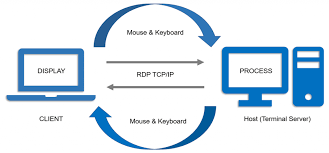Innovative Tools and Techniques for Intelligent Homes
The age of technology has redefined the meaning of home. Gone are the days when homes were just structures made of bricks and cement; they have now transformed into smart ecosystems driven by advanced control systems. In this article, we will delve into the myriad tech and device overviews that shape modern home automation.
1. The Heartbeat: Advanced Control Systems
At the core of every smart home lies its control system, a sophisticated platform that acts as the central nervous system. Just like our brain commands our body’s functions, this home automation tech coordinates and controls all smart devices within the house. From adjusting the room’s temperature to ensuring the house is locked, the control system ensures seamless operations. Companies like Nest, SmartThings, and Control4 have designed intuitive platforms that integrate seamlessly with various smart devices, offering homeowners unparalleled convenience.
2. Illumination Innovations: Smart Lighting
The power of smart lighting goes beyond the mere on and off functions. Imagine walking into a room and the lights adjusting to your mood or the time of day. Intelligent lighting systems like Philips Hue or LIFX allow homeowners to control the color, brightness, and even patterns of their lights using their smartphones or voice commands. Coupled with smart house protocols, these systems can also be automated to mimic sunrise in the morning or gradually dim as you watch a movie.
3. The Security Vanguard: Surveillance and Safety Devices
Safety is paramount in any household. Connected home devices such as smart locks, surveillance cameras, and sensors are transforming home security. Companies like Ring and Nest have designed products that not only alert homeowners of any intruders but also allow them to monitor their homes in real-time from anywhere in the world. Additionally, sensors detect any gas leaks, fires, or flooding, ensuring the household’s safety and security.
4. Commanding Comfort: Intelligent HVAC Systems
Temperature regulation is more than just a luxury; it’s a necessity. Advanced HVAC systems integrated with AI can predict the homeowner’s preferences. For instance, on a chilly winter morning, the heating system can warm up the living room just before the homeowner steps out of their bed. Brands like Ecobee and Honeywell have developed intelligent home machinery that learns user behavior over time and optimizes temperature settings for comfort and energy savings.
5. Culinary Conveniences: Smart Kitchen Appliances
The kitchen, often referred to as the heart of a home, hasn’t been left behind in this technological revolution. Modern smart refrigerators can notify you when you’re running low on milk, ovens can be preheated on your way home, and coffee machines can have your morning brew ready as you wake up. Such smart appliances not only offer convenience but also enhance energy efficiency and food safety.
6. Holistic Entertainment: Advanced Audio and Visual Systems
Gone are the days of bulky television sets and tangled cables. Today’s digital home networks feature sleek, wall-mounted TVs integrated with sound systems that offer theater-quality audio. Systems like Sonos and Bose integrate with home automation platforms, allowing homeowners to control their entertainment setup with voice commands or a tap on their phones.
In conclusion, the world of smart homes is ever-evolving, with management techniques and devices continuously pushing the boundaries of convenience, safety, and luxury. As technology advances, we can expect even more integrated and user-friendly solutions. For homeowners, embracing these innovations means not only living in the future but also enjoying a quality of life like never before. Whether you’re building a new home or retrofitting an existing one, consider integrating these technologies for an enhanced living experience.


